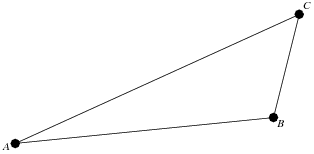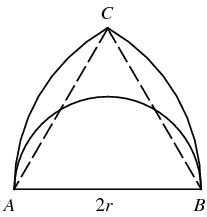

تاريخ الرياضيات

الاعداد و نظريتها

تاريخ التحليل

تار يخ الجبر

الهندسة و التبلوجي


الرياضيات في الحضارات المختلفة

العربية

اليونانية

البابلية

الصينية

المايا

المصرية

الهندية


الرياضيات المتقطعة

المنطق

اسس الرياضيات

فلسفة الرياضيات

مواضيع عامة في المنطق


الجبر

الجبر الخطي

الجبر المجرد

الجبر البولياني

مواضيع عامة في الجبر

الضبابية

نظرية المجموعات

نظرية الزمر

نظرية الحلقات والحقول

نظرية الاعداد

نظرية الفئات

حساب المتجهات

المتتاليات-المتسلسلات

المصفوفات و نظريتها

المثلثات


الهندسة

الهندسة المستوية

الهندسة غير المستوية

مواضيع عامة في الهندسة

التفاضل و التكامل


المعادلات التفاضلية و التكاملية

معادلات تفاضلية

معادلات تكاملية

مواضيع عامة في المعادلات


التحليل

التحليل العددي

التحليل العقدي

التحليل الدالي

مواضيع عامة في التحليل

التحليل الحقيقي

التبلوجيا

نظرية الالعاب

الاحتمالات و الاحصاء

نظرية التحكم

بحوث العمليات

نظرية الكم

الشفرات

الرياضيات التطبيقية

نظريات ومبرهنات


علماء الرياضيات

500AD

500-1499

1000to1499

1500to1599

1600to1649

1650to1699

1700to1749

1750to1779

1780to1799

1800to1819

1820to1829

1830to1839

1840to1849

1850to1859

1860to1864

1865to1869

1870to1874

1875to1879

1880to1884

1885to1889

1890to1894

1895to1899

1900to1904

1905to1909

1910to1914

1915to1919

1920to1924

1925to1929

1930to1939

1940to the present

علماء الرياضيات

الرياضيات في العلوم الاخرى

بحوث و اطاريح جامعية

هل تعلم

طرائق التدريس

الرياضيات العامة

نظرية البيان
Obtuse Triangle
المؤلف:
Buchta, C
المصدر:
"A Note on the Volume of a Random Polytope in a Tetrahedron." Ill. J. Math. 30
الجزء والصفحة:
...
11-2-2020
3461
Obtuse Triangle

An obtuse triangle is a triangle in which one of the angles is an obtuse angle. (Obviously, only a single angle in a triangle can be obtuse or it wouldn't be a triangle.) A triangle must be either obtuse, acute, or right.
From the law of cosines, for a triangle with side lengths  ,
,  , and
, and  ,
,
 |
(1) |
with  the angle opposite side
the angle opposite side  . For an angle to be obtuse,
. For an angle to be obtuse,  . Therefore, an obtuse triangle satisfies one of
. Therefore, an obtuse triangle satisfies one of  ,
,  , or
, or  .
.
An obtuse triangle can be dissected into no fewer than seven acute triangles (Wells 1986, p. 71).
A famous problem is to find the chance that three points picked randomly in a plane are the polygon vertices of an obtuse triangle (Eisenberg and Sullivan 1996). Unfortunately, the solution of the problem depends on the procedure used to pick the "random" points (Portnoy 1994). In fact, it is impossible to pick random variables which are uniformly distributed in the plane (Eisenberg and Sullivan 1996). Guy (1993) gives a variety of solutions to the problem. Woolhouse (1886) solved the problem by picking uniformly distributed points in the unit disk, and obtained
 |
(2) |
The problem was generalized by Hall (1982) to  -dimensional ball triangle picking, and Buchta (1986) gave closed form evaluations for Hall's integrals.
-dimensional ball triangle picking, and Buchta (1986) gave closed form evaluations for Hall's integrals.

In 1893, Lewis Carroll (1976) posed and gave another solution to the problem as follows. Call the longest side of a triangle  , and call the diameter
, and call the diameter  . Draw arcs from
. Draw arcs from  and
and  of radius
of radius  . Because the longest side of the triangle is defined to be
. Because the longest side of the triangle is defined to be  , the third polygon vertex of the triangle must lie within the region
, the third polygon vertex of the triangle must lie within the region  . If the third polygon vertex lies within the semicircle, the triangle is an obtuse triangle. If the polygon vertex lies on the semicircle (which will happen with probability 0), the triangle is a right triangle. Otherwise, it is an acute triangle. The chance of obtaining an obtuse triangle is then the ratio of the area of the semicircle to that of
. If the third polygon vertex lies within the semicircle, the triangle is an obtuse triangle. If the polygon vertex lies on the semicircle (which will happen with probability 0), the triangle is a right triangle. Otherwise, it is an acute triangle. The chance of obtaining an obtuse triangle is then the ratio of the area of the semicircle to that of  . The area of
. The area of  is then twice the area of a circular sector minus the area of the triangle.
is then twice the area of a circular sector minus the area of the triangle.
 |
(3) |
Therefore,
 |
(4) |
REFERENCES:
Buchta, C. "A Note on the Volume of a Random Polytope in a Tetrahedron." Ill. J. Math. 30, 653-659, 1986.
Carroll, L. Pillow Problems & A Tangled Tale. New York: Dover, 1976.
Eisenberg, B. and Sullivan, R. "Random Triangles  Dimensions." Amer. Math. Monthly 103, 308-318, 1996.
Dimensions." Amer. Math. Monthly 103, 308-318, 1996.
Guy, R. K. "There are Three Times as Many Obtuse-Angled Triangles as There are Acute-Angled Ones." Math. Mag. 66, 175-178, 1993.
Hall, G. R. "Acute Triangles in the  -Ball." J. Appl. Prob. 19, 712-715, 1982.
-Ball." J. Appl. Prob. 19, 712-715, 1982.
Portnoy, S. "A Lewis Carroll Pillow Problem: Probability on at Obtuse Triangle." Statist. Sci. 9, 279-284, 1994.
Wells, D. The Penguin Dictionary of Curious and Interesting Numbers. Middlesex, England: Penguin Books, p. 71, 1986.
Wells, D. G. The Penguin Book of Interesting Puzzles. London: Penguin Books, pp. 67 and 248-249, 1992.
Woolhouse, W. S. B. Solution to Problem 1350. Mathematical Questions, with Their Solutions, from the Educational Times, 1. London: F. Hodgson and Son, 49-51, 1886.
 الاكثر قراءة في نظرية الاعداد
الاكثر قراءة في نظرية الاعداد
 اخر الاخبار
اخر الاخبار
اخبار العتبة العباسية المقدسة

الآخبار الصحية















 قسم الشؤون الفكرية يصدر كتاباً يوثق تاريخ السدانة في العتبة العباسية المقدسة
قسم الشؤون الفكرية يصدر كتاباً يوثق تاريخ السدانة في العتبة العباسية المقدسة "المهمة".. إصدار قصصي يوثّق القصص الفائزة في مسابقة فتوى الدفاع المقدسة للقصة القصيرة
"المهمة".. إصدار قصصي يوثّق القصص الفائزة في مسابقة فتوى الدفاع المقدسة للقصة القصيرة (نوافذ).. إصدار أدبي يوثق القصص الفائزة في مسابقة الإمام العسكري (عليه السلام)
(نوافذ).. إصدار أدبي يوثق القصص الفائزة في مسابقة الإمام العسكري (عليه السلام)


















